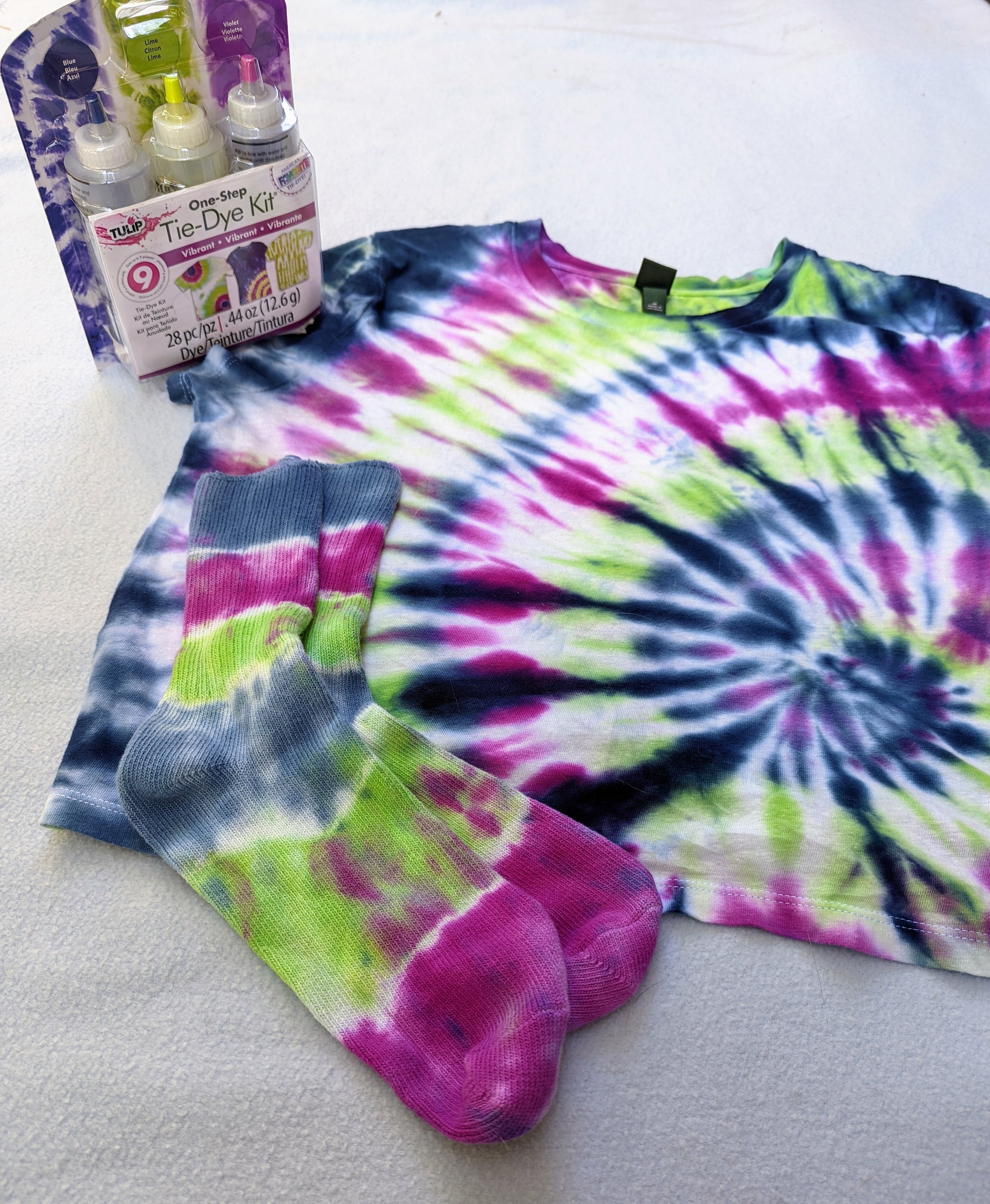Get your groove on with a backyard tie dye party!
Last post we covered crafting on the go - for those staying closer to home, a backyard tie dye party is just the thing to close out your summer in style. Next time you fire up the grill, use this guide to prep a tie dye station that will spark creativity and send your guests home with stylin’ handmade swag
What to dye: When it comes to tie dye, cotton is king. Read those labels and aim for 100% cotton for the most vibrant, predictable color transfer. Other fabrics that dye well are Rayon (also known as Viscose), silk, muslin and denim. I like to raid thrift stores and my own closet, but if you’re looking to buy something new to dye, Dharma Trading is a great resource.
How to dye: If I’ve said it once, I’ve said it a hundred times: messing up tie dye is virtually impossible. The basic process is: soak, fold/twist/bunch/roll, tie (with rubber bands), dye, soak, wash, and wear. If you want some inspo for how to get the swirls, circles, stripes or clouds of color you think of when you think ‘tie dye,’ again I’ll recommend the guides on Dharma Trading. If it’s your first time, the one-step dye kits from Tulip make the chemical mixing easy peasy!
Going natural: Did you know that you can also dye fabric with onion skins? Avocado pits? Flowers? Botanical Colors is fantastic for sourcing ready to use materials and learning about natural dye.
Feeling blue: Indigo dyeing is another classic take on tie dye, and easy to pull off at home. Natural indigo can be expensive and hard to find, but this synthetic reduction is chemically identical – making it much simpler to achieve those deep blue results.
Flip it and reverse it: While traditional tie dye focuses on adding color to white or light colored fabrics, bleach or reverse dyeing actually takes color out, creating the same swirls and patterns in darker garments. RIT has great information on using their color remover for reverse tie-dye. It’s also possible to remove black dye from clothing using bleach (some blogs recommend diluting 1:1 with water), but results vary greatly! In my experience you’ll want to spot test until you get the color removal results you’re happy with before tying and dyeing the whole thing.
All of these activities are great for the outdoors, and this advice is great for the final planning for your group event! Put down a tarp or some newspaper if you’re worried about turning your grass another color (and wear gloves if you don’t want to turn up to work with rainbow hands - I may or may not be speaking from experience). Happy dyeing!

